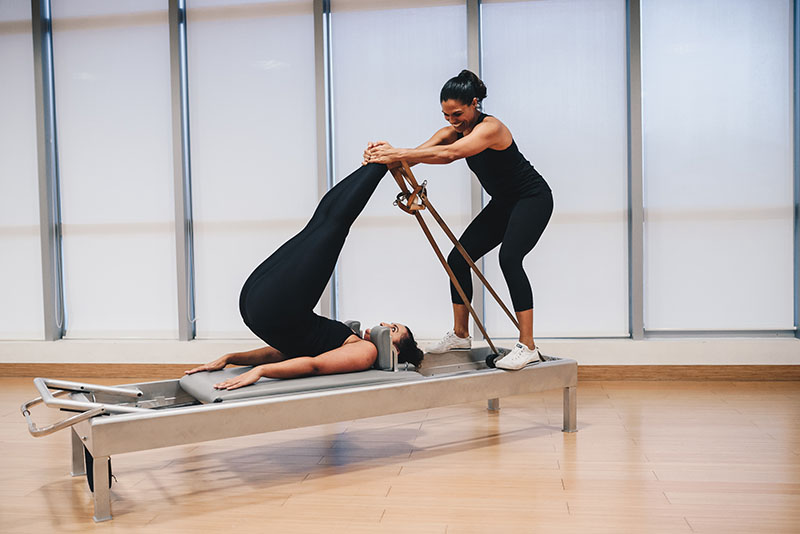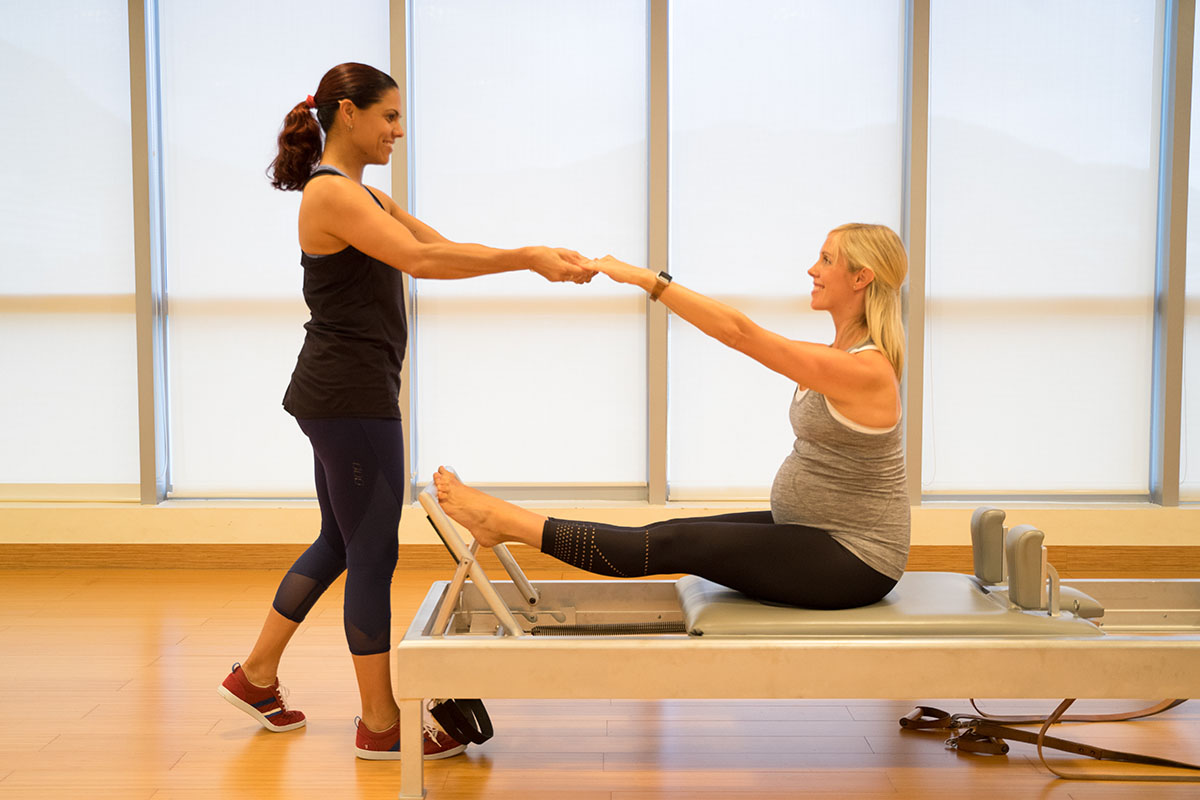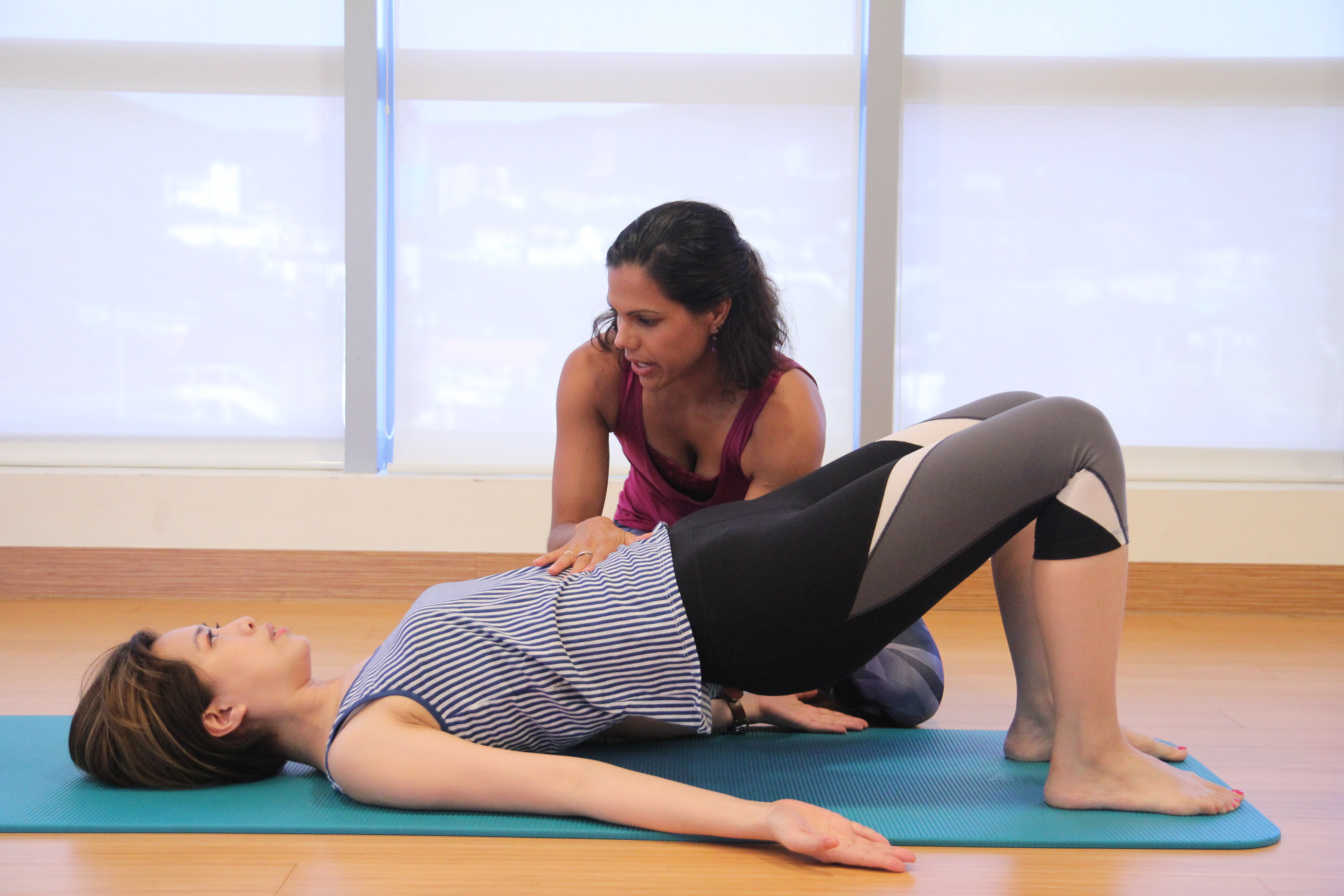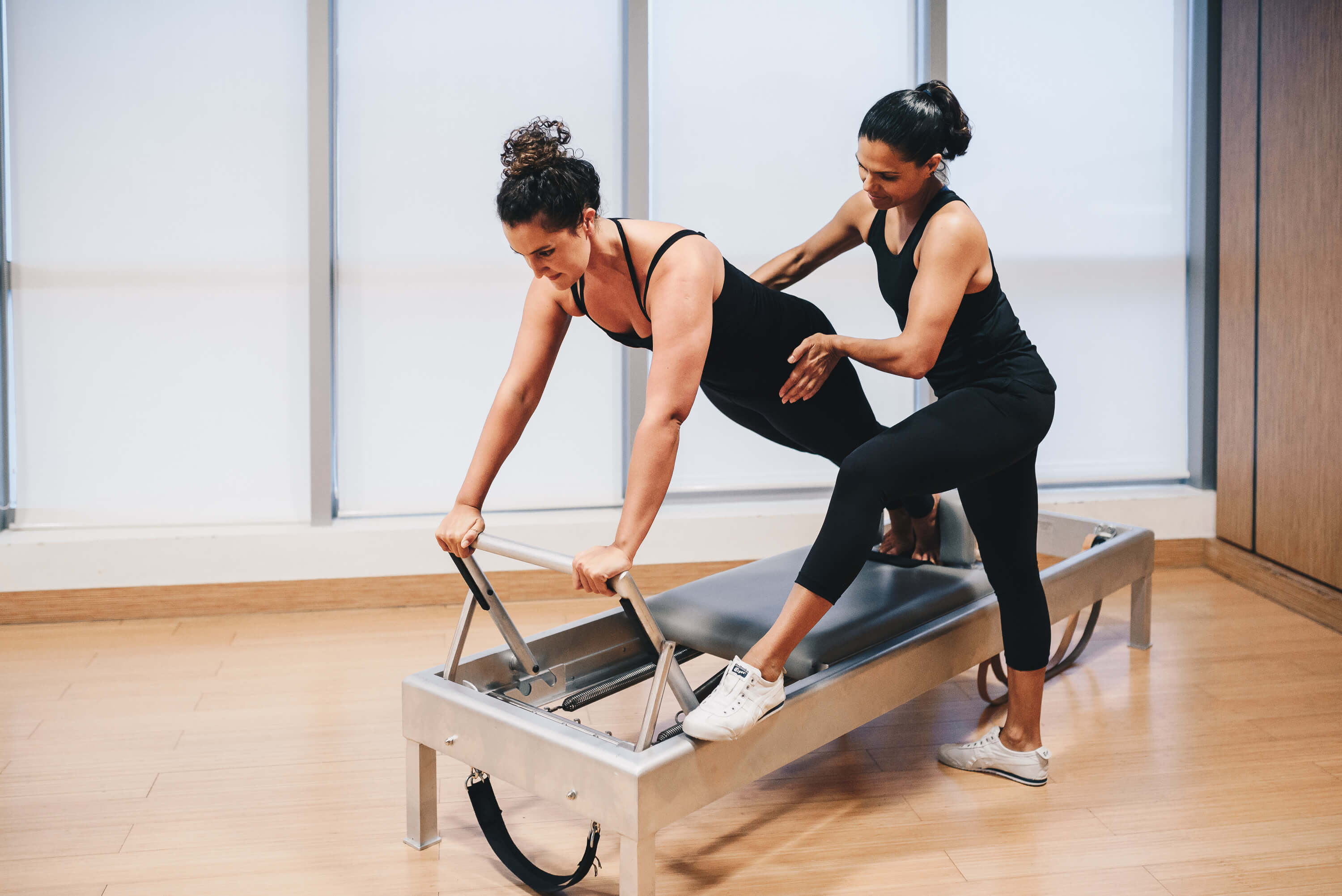
28 May Body After Baby: Common Postnatal Symptoms and What Cause Them
As with pregnancy, postnatal recovery comes with its own set of challenges. Senior Pilates instructor Nicole Serje breaks down 4 common post-pregnancy symptoms to watch out for.
Everyone talks about what to expect during pregnancy and childbirth, but little is said about the postnatal period. While most of your focus during this time is on the health and wellbeing of your baby (as it should be!) it is just as important to take care of your own recovering body.

The first weeks are crucial. As you ease your way back into the hustle and bustle of your daily routine, listen to your body for any feelings of discomfort or soreness. Brushing them aside could lead to more serious complications later on.
With the help of Senior Pilates instructor Nicole Serje, we explore 4 common postnatal symptoms to keep an eye out for as you embark on your journey to recovery.
1. The “Mummy Tummy” or “Mommy Pooch”
If there is still a noticeable bulge in your tummy even months after delivery, you may be experiencing abdominal separation. Also known as diastasis recti, abdominal separation occurs when the connective tissue along the midline of your abdomen, and in fact the whole abdominal wall, becomes thinner and weaker and therefore stretched due to the growing uterus. This results in the space between the muscle bellies of your rectus abdominis to widen resulting in a “gap.” The widened gap between the left and right muscles of your stomach may result in the “mummy pouch.”
“Majority experience this,” Nicole says. One study shows that about two-thirds of women experience abdominal separation during or after pregnancy. DR does improve naturally after birth, but depending on the severity of your DR along with other factors such as genetics and lifestyle, it may not always resolve itself. Interestingly, abdominal separation is not exclusive to just pregnant women. Babies and men can experience it, too!
2. Lower Back Pain
The back pain you are experiencing post-pregnancy may be due to postural misalignment. “During pregnancy, there are several postural changes that occur,” Nicole explains. “Most commonly, there is an increase in the woman’s lower back curve due to less support from the abdominal muscles along with the increased weight of the baby. The lower back muscles tend to become tighter from trying to counterbalance the weight of the growing baby and this change usually affects the alignment and stability of the pelvis and the upper body as well.”

3. Odd Breathing Patterns
New mums may find that the shortness of breath they started to experience during pregnancy carries on even after childbirth. Nicole explains, “As the baby grows the organs of the body tend to get displaced into the thoracic cavity to allow space for the baby. The diaphragm is then restricted and unable to function optimally resulting in shortness of breath or discomfort while breathing.”
She adds, “Postnatally, the ribs will tend to get stuck in a flared position due to the above occurrences. Therefore it’s important to realign and retrain the muscles and organs of breathing so they can return to their functional capacity.”
4. Loss of Muscle Strength & Connection
Loss of muscle strength and connection in the abdominal and pelvic area is common post-pregnancy. You did just grow a baby in your belly for 9 months, so this is totally understandable! Therefore it is important to be patient with yourself and to be kind to yourself! In particular, mums that have undergone C-sections may feel this loss of abdominal connection a little more due to scar tissue and fascial adhesions. “Having scar tissue greatly affects muscle function, range of motion and connection,” Nicole says. But regardless of whether you’ve had a vaginal birth or cesarean birth, there is generally always a disconnect within the whole core unit (from the diaphragm to the pelvic floor).
The Best Way Forward
So what is the best way forward? According to Nicole, a holistic approach which includes movement and exercise will lead to optimal recovery. Pilates is one way to help achieve that. Nicole says, “Physically, Pilates is great because it works on alignment which encourages better connection and contraction of the muscles, allowing for improved core strength, pelvic floor engagement and general postural strength.”
Whether you’re experiencing one or more of these symptoms — or none at all — the best thing to do at this time is to take it easy. There’s no need to rush the process! “As women, there’s this whole notion that we have to be a certain way, recover within a certain time frame, and look exactly the way we did before,” Nicole says. “It shouldn’t be that way because our bodies are different and have done the most incredible thing it will ever do. You are a changed person and you need to give yourself the TLC you deserve!”

Looking to start your post-pregnancy journey? Join our informative, inspiring and personalised Postnatal Recovery Workshops led by Nicole Serje. The next schedule is on June 10 and 17, 2020 (Wednesdays) at Flex Studio One Island South. Click here to see the most updated information.


